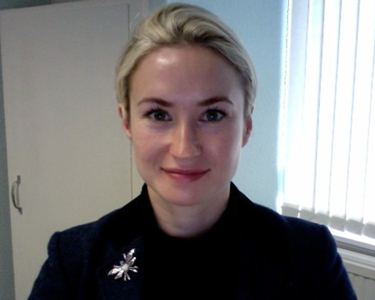University lecturer wins prestigious US award
Published: 19 June 2013
Dr Rachael E. Jack, a Lecturer in the Institute of Neuroscience and Psychology, has won the prestigious American Psychological Association New Investigator Award 2013.
A University lecturer has won the prestigious American Psychological Association (APA) New Investigator Award 2013.
Dr Rachael E. Jack is a Lecturer in the Institute of Neuroscience and Psychology, part of the College of Medical, Veterinary and Life Sciences and the College of Science and Engineering. Rachael's research is funded by the ESRC Future Research Leaders scheme. 
Her paper, Internal Representations Reveal Cultural Diversity in Expectations of Facial Expressions of Emotion, was completed as part of her PhD and comprised her second, first-author publication. Rachael modelled, for the first time, the mental representations (i.e., expectations built from previous experience interacting with the environment) of facial expressions in Eastern and Western culture using a psychophysical technique - reverse correlation.
The paper indicated that Westerners and Easterners expect expressive information to be located in different regions of the face: whereas Westerners expect expressive information to be located in the eye and mouth regions, Easterners primarily expect expressive information to be in the eye region. These results mirrored those of a previous Current Biology (2009) paper, which showed that Easterners and Westerners sample different information from the face to categorize facial expressions. It showed that Easterners expect emotion to be expressed using clear changes of gaze direction (e.g., looking left or right), whereas Westerners do not.
Together, these results question widespread notions of a universal language of emotion and model, for the first time, the cultural specificities of emotion communication across cultures.
Jack, R.E., Caldara, R., & Schyns, P.G. (2011). Internal Representations Reveal Cultural Diversity in Expectations of Facial Expressions of Emotion. doi: 10.1037/a0023463
First published: 19 June 2013
<< June

